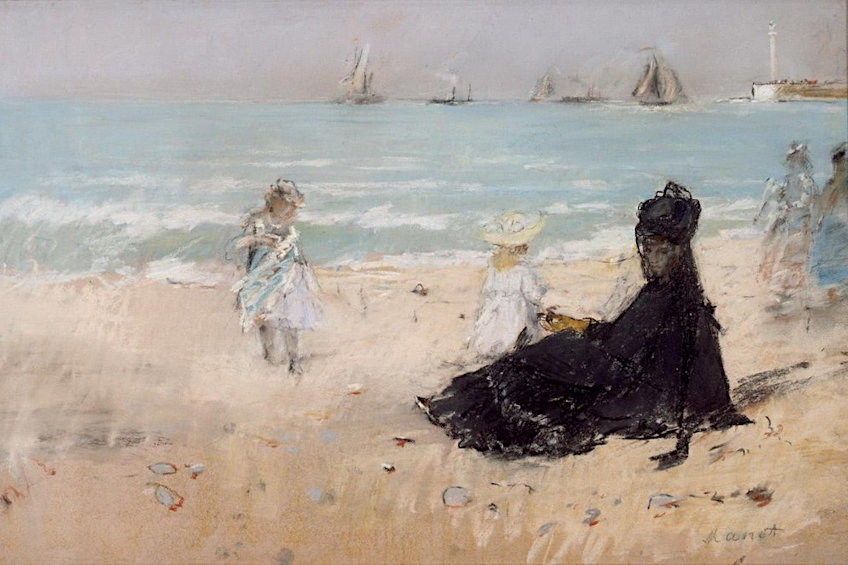Famous Woman Impressionists – Early Female Modernists
For much of art history, work created by female artists has largely been overlooked. This, however, started to change during Modernism, when several female Impressionists stood at the forefront of this avant-garde movement. Even though several female artists were honored during their lifetimes for their contributions to modern art, after they passed away, their legacy was not given the same level of recognition as that of their male peers. In this article, we revisit seven famous women Impressionists, whose works are often forgotten and overlooked.
What Is Impressionism?
Impressionism is one of the most significant art movements of the 19th century. In many ways, Impressionism is a revolutionary art movement as it went against the tradition of depicting historical or mythological scenes in paintings. The movement started with a group of artists, who were deemed radical at the time, exhibiting outside the existing Paris salon system.
These artists preferred studying the effect of light using loose quick brushstrokes with unmixed colors. Following their interest in light, Impressionists predominantly painted outside, which they referred to as painting en plein air.
To be able to easily paint outside, they opted for smaller canvas formats that allowed them to carry their work to whichever landscape or object inspired them. This was another thing that made their work seem so radical, as most artists at the time aspired to create monumental history paintings, which were considered, at the time, to be the pinnacle of artistic greatness.
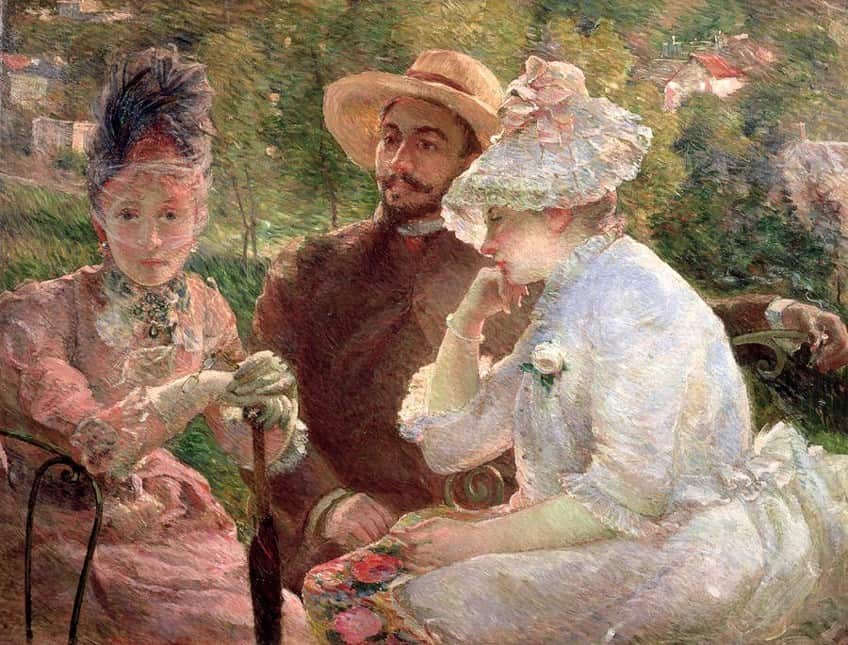
As the Parisian Impressionists preferred to paint outside, their work naturally reflected the modern society of Paris. Modern life, they argued, was as worthy a subject to paint as historical events. This shift of subject dramatically opened Impressionism up for female artists to participate in.
Women were traditionally prohibited from creating history paintings, as it was believed that the subject matter and human anatomy were too ambitious for women to attempt.
Instead, female painters were encouraged to paint less formal domestic scenes, reflecting their daily life. Depicting daily life, however, became one of the most important focal points for Impressionists, and thus a door was opened to female artists, who contributed greatly and gladly to the movement.
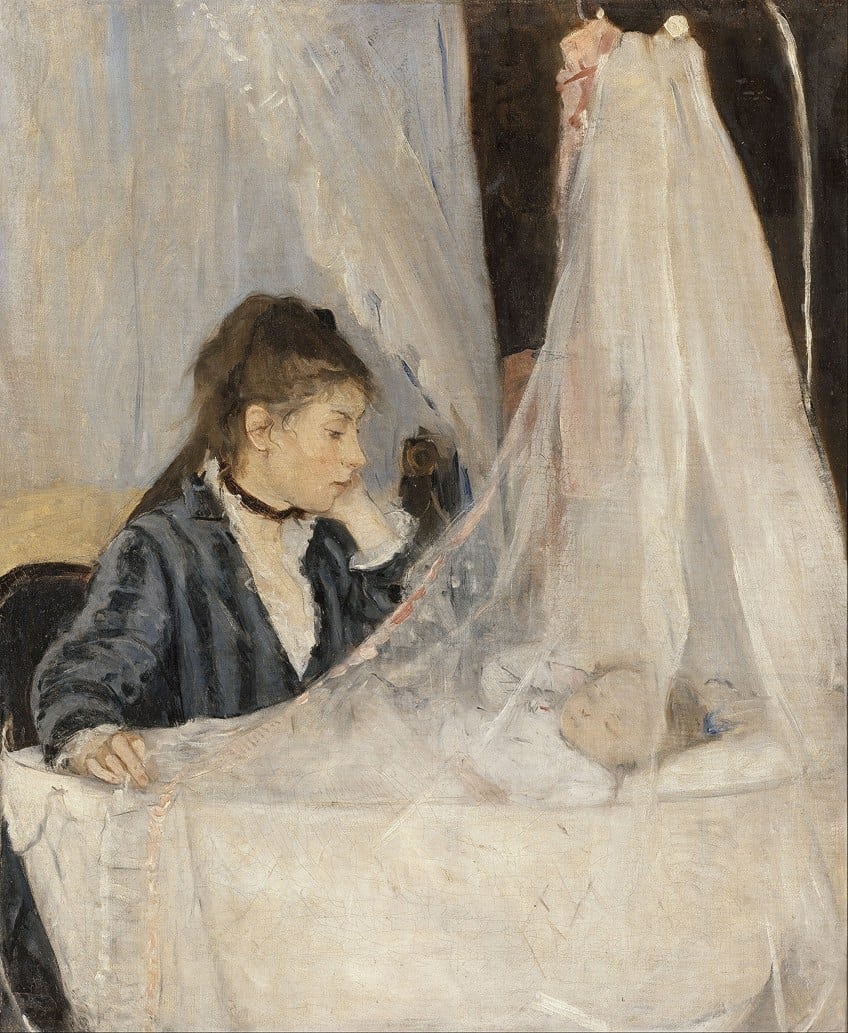
Women’s Role in Impressionism
When Impressionists debuted their art in a group exhibition in 1874, critics labeled the work as being “feminine”. Critics saw the works as feminine due to the smaller size of the canvases, the lighter and softer pastel palettes, the looseness of the brushstrokes, and the depictions of everyday life, including scenes of mothers and daughters in parks, seascapes, and English gardens.
Art critic Téodor de Wyzewa even went as far as saying in 1891 that only women have the right to “rigorously practice” in Impressionist art. He continued to say that only women can “limit” their efforts “to the translation of impressions”.
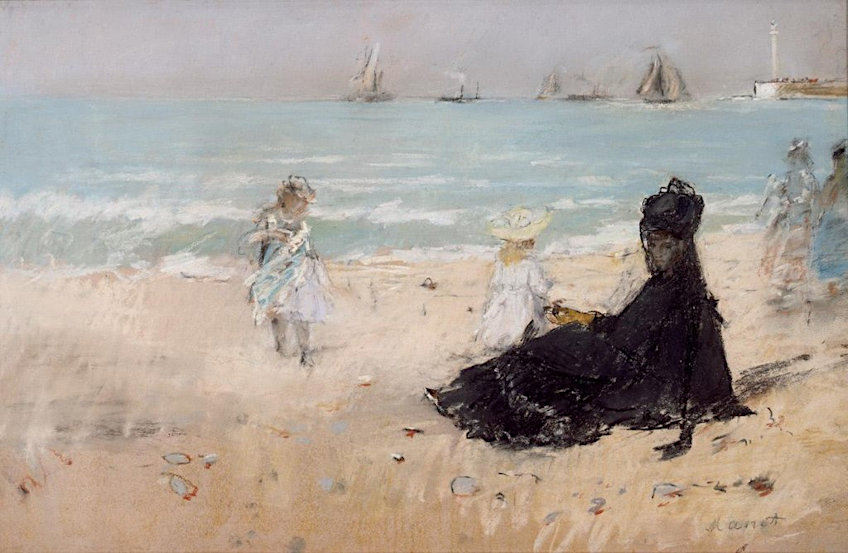
Even though Wyzewa meant these comments as an insult to the movement, female artists nonetheless embraced the movement. Keep in mind that in the 19th century in France, women, for the most part, could not obtain a formal art education, which often involved studying nude figures, something deemed highly scandalous for young ladies. On top of this, it was frowned upon if unmarried women were to leave their homes without a chaperone.
Women were expected to pass their time tending to household matters and practicing decorative arts, always in the company of other ladies. Female artists that embraced the Impressionist movement used these confines placed on women at the time to their advantage. Many of their works were introspective, shedding light on the societal conditions placed on women at the time with stunning, brave, and studious artworks.
Seven Famous Women Impressionists
Female Impressionists have largely been undervalued or even completely omitted from the historical canon. Three famous women Impressionists, however, were singled out in 1894 by art critic Henri Focillon as the Les Trois Grandes Dames — the “three great ladies” of Impressionism.
These three women were Berthe Morisot, Mary Cassatt, and Marie Bracquemond. The female trio were friends and peers, and their work was admired by their male contemporaries, like Édouard Manet, who apparently had a collection of Morisot’s work displayed in his bedroom.

When we think of famous women impressionists, these three women are often the first to come to mind. In this article, however, we would like to broaden the scope of admiration by including four other female impressionists whose work we believe is equally as impressive as that of the pioneering trio and their male contemporaries.
Marie Bracquemond (1840 – 1916)
| Nationality | French |
| Date of Birth | 1 December 1840 |
| Date of Death | 17 January 1916 |
| Where She Lived | Étampes, Sèvres and Paris, France |
| Associated Art Movements | Impressionism |
| Most Famous Paintings |
|
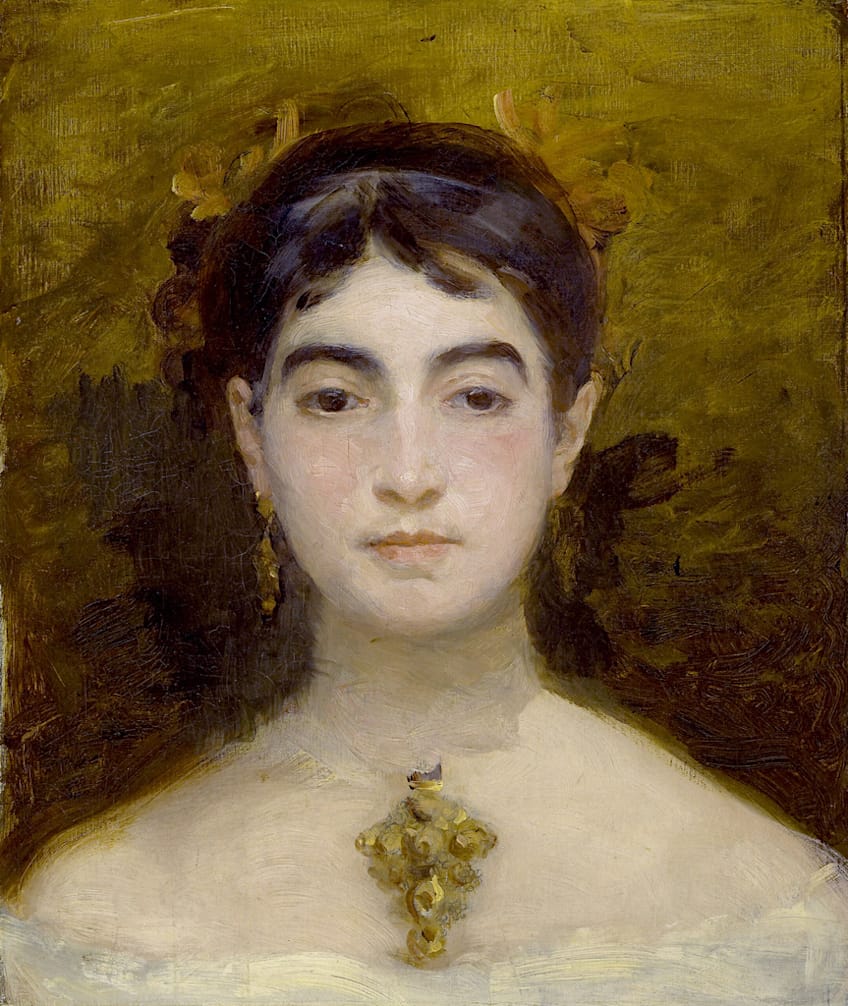
Marie Bracquemond was not born into an affluent family and as such did not enjoy the same creative freedom as some of her contemporaries. Due to a lack of resources, Bracquemond was largely a self-taught female Impressionist painter.
Bracquemond made her first work, a gift for her mother, when she was a teenager. She made the painting using pigments she created by crushing field flowers.
She received a rare opportunity when family friends introduced her to the Neoclassical painter, Jean-Auguste-Dominique Ingres. Ingres became her only ever teacher when he recognized her talent and invited her to study under him.

Bracquemond, however, did not stay at Ingres’s studio for long, arguing that he did not take her seriously. In a letter, she explained that he doubted the courage and perseverance of a woman in the field of painting.…He would assign to them only the painting of flowers, of fruits, of still lives, portraits, and genre scenes”.
Instead, she decided to paint large-scale paintings of women, often in outdoor settings, painting en plein air in true Impressionist fashion. The response to her work was encouraging and the Impressionists invited her to exhibit with them. She participated in three Impressionist exhibitions, but her husband was disapproving of her art career and soon she gave up painting altogether.
Berthe Morisot (1841 – 1895)
| Nationality | French |
| Date of Birth | 14 January 1841 |
| Date of Death | 2 March 1895 |
| Where She Lived | Paris, France |
| Associated Art Movements | Impressionism |
| Most Famous Paintings |
|
Of all the female Impressionists, Berthe Morisot is probably the most famous. Her work was reintroduced to the world in spectacular fashion in 2018 when a stunning solo exhibition of her work traveled through Europe and North America. Morisot was born in 1841 in Bourges, France. She exhibited her work at the 1864 Paris Salon at the age of 25.
When the founding Impressionists had their first revolutionary exhibition in 1874, Morisot was the only female painter to be invited to exhibit alongside them. Her work was highly admired by her peers, including Edgar Degas, Édouard Manet, Claude Monet, and Pierre-Auguste Renoir.
She continued to exhibit in seven Impressionist exhibitions between 1874 and 1886. She was especially fond of Manet, and even married his brother. Eugène Manet, her husband, and their daughter, Julie, were frequently featured in her paintings.
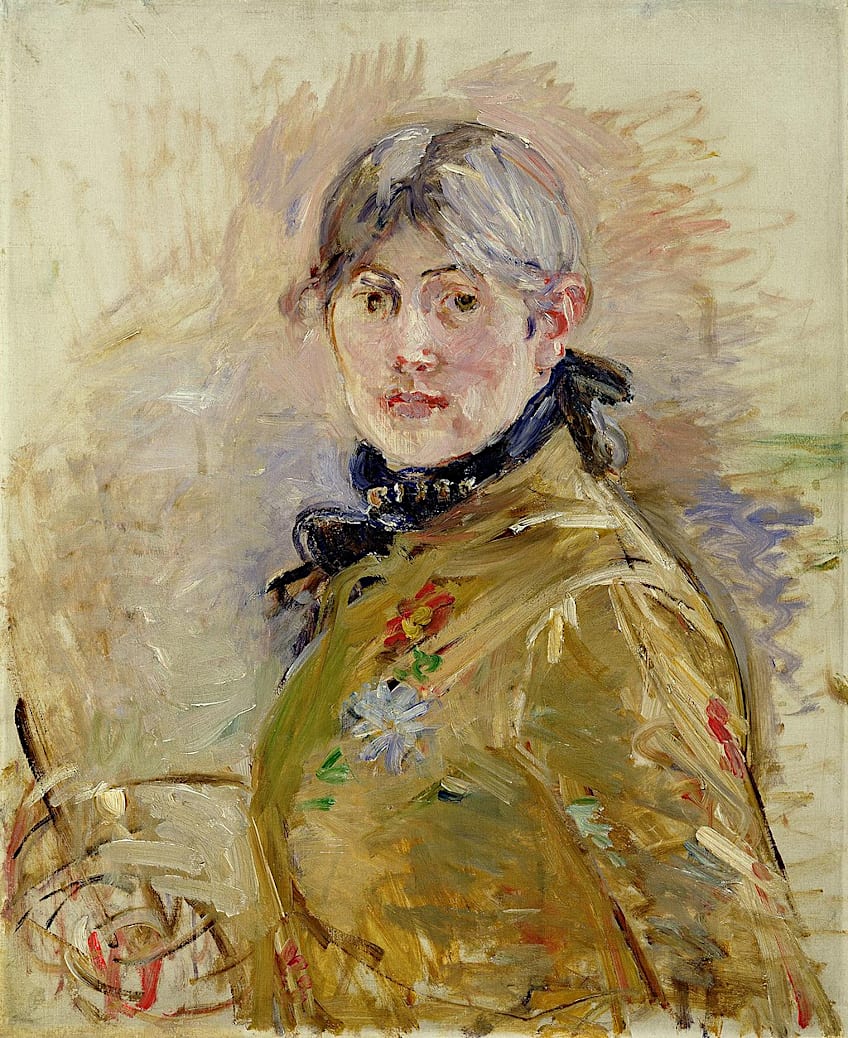
As the only woman among the founding members of the Impressionist movement, Morisot’s contribution was extraordinary, broadening the scope of Impressionism through her experiences as a woman in Paris at the time.
As an upper-class young lady living in Paris, Morisot was not allowed to venture outdoors by herself, nor could she attend bars or cafés by herself. These were typically the places her male peers would visit to paint scenes of Parisian modern life and outdoor scenes inspired by the changing light.
Although these spaces were not always an option for her, she nonetheless found ways to create Impressionist works that were often considered “radical”. Painting interior spaces and domestic life with bold, loose brushstrokes, Morisot infused new life into her subjects, creating fluid works that were almost abstract. Her work has great frankness and authenticity, infusing it with characteristics of Realism.

In her famous work, In the garden at Maurecourt (1884), she depicts a mother observing her child with an expression of boredom and exhaustion. Her work doesn’t romanticize motherhood, but rather shows the real emotions that are part of everyday life for mothers all over the world.
Mary Cassatt (1844 – 1926)
| Nationality | American |
| Date of Birth | 22 May 1844 |
| Date of Death | 14 June 1926 |
| Where She Lived | Paris, France |
| Associated Art Movements | Impressionism, Post-Impressionism |
| Most Famous Paintings |
|

Part of the Les Trois Grandes Dames, Mary Stevenson Cassatt was the only female Impressionist painter born in America. Raised in an affluent family in Pittsburgh, her parents supported a formal art education. At first, she studied at the Pennsylvania Academy of the Fine Arts and later she traveled to Europe, where she was allowed to study nude models.
Whilst traveling through Europe, she received mentorship from Jean-Léon Gérôme and Édouard Frère. She also studied the classical works of Correggio, Velázquez, and Rubens.
Cassatt was incredibly inspired by the art and culture of the European cities and decided to move to Paris in 1874. Soon after her arrival in Paris, she started showcasing her portrait paintings in the Paris Salon.

Cassatt was first invited to exhibit her work with the Impressionists in 1877. She exhibited in four of the eight Impressionist exhibitions. When considering Cassatt’s painting, Young Woman Picking Fruit (1892), Degas commented that “no woman has the right to draw like that”. Despite the disguised insult in Degas’ comment, Degas and Cassatt were close friends.
Cassatt was a remarkably independent woman for the era, supporting herself through her paintings and prints. She never married or had children, believing that she was not fit for such domestic life. Yet, many of Cassatt’s paintings depict intimate scenes with mothers and their children in informal settings. Cassatt’s painting style was more detailed compared to Morisot’s expressive and looser brushstrokes. With her sensitive brushstrokes, Cassatt aimed to paint women and children as “subjects, not objects”.
Apart from her influence on Parisian Impressionism, Cassatt also introduced Impressionism to America through her patrons, friends, and family that collected her work in her home country.
Lilla Cabot Perry (1848 – 1933)
| Nationality | American |
| Date of Birth | 13 January 1848 |
| Date of Death | 23 February 1933 |
| Where She Lived | Boston, Paris |
| Associated Art Movements | Impressionism |
| Most Famous Paintings |
|
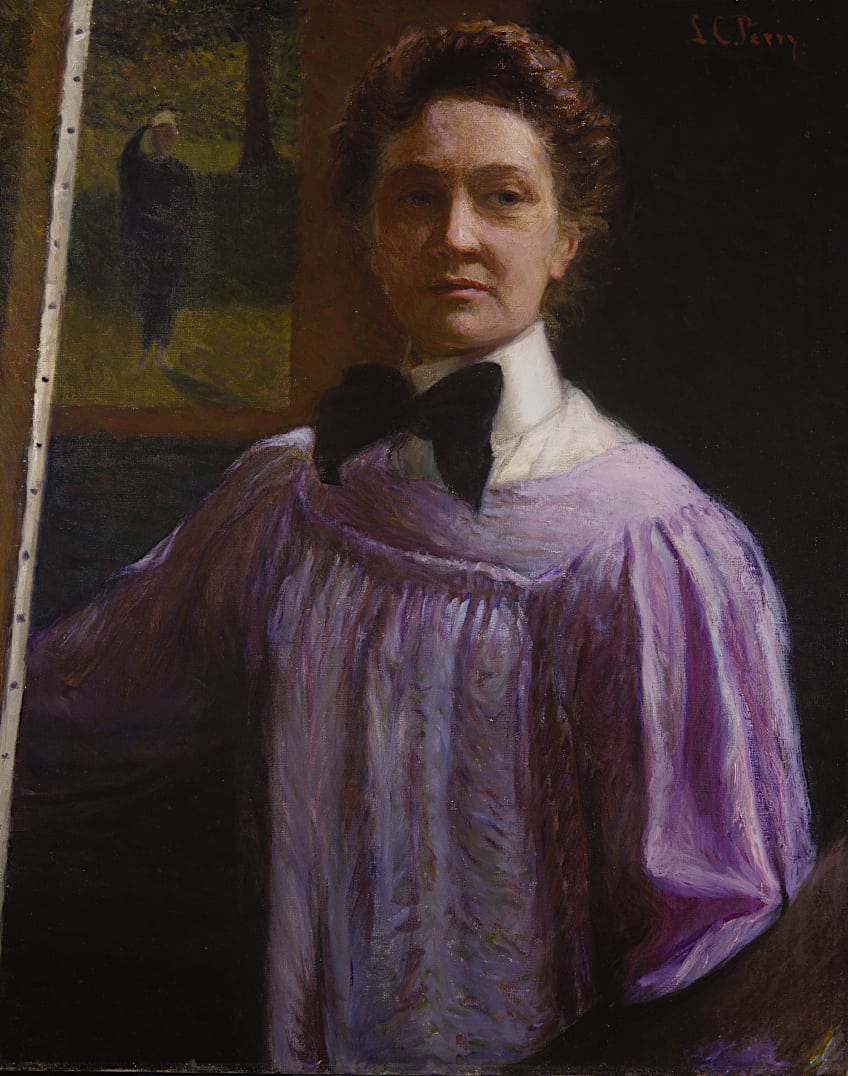
Lilla Cabot Perry was born to an affluent family in Boston. While she often enjoyed drawing as a child, she only started painting at the age of 36, after already giving birth to three girls. After discovering painting, she dedicated almost all her time to it for the remainder of her life. Her family’s wealth enabled her to move to Paris, where she would fall in love with the art of the Impressionists.
She especially loved Monet’s approach to painting light and collected many of his works. She eventually became his informal student.

Perry embraced the Impressionist painting style fully, creating stunning landscapes and portraits in true Impressionist fashion. She even arranged for her family holidays to be spent in the French town of Giverny, where Monet created his iconic water lily works.
Perry’s work and her love for French Impressionism reignited the Impressionist spark in America.
Eva Gonzalès (1849 – 1883)
| Nationality | French |
| Date of Birth | 19 April 1849 |
| Date of Death | 6 May 1883 |
| Where She Lived | Paris, France |
| Associated Art Movements | Impressionism |
| Most Famous Paintings |
|
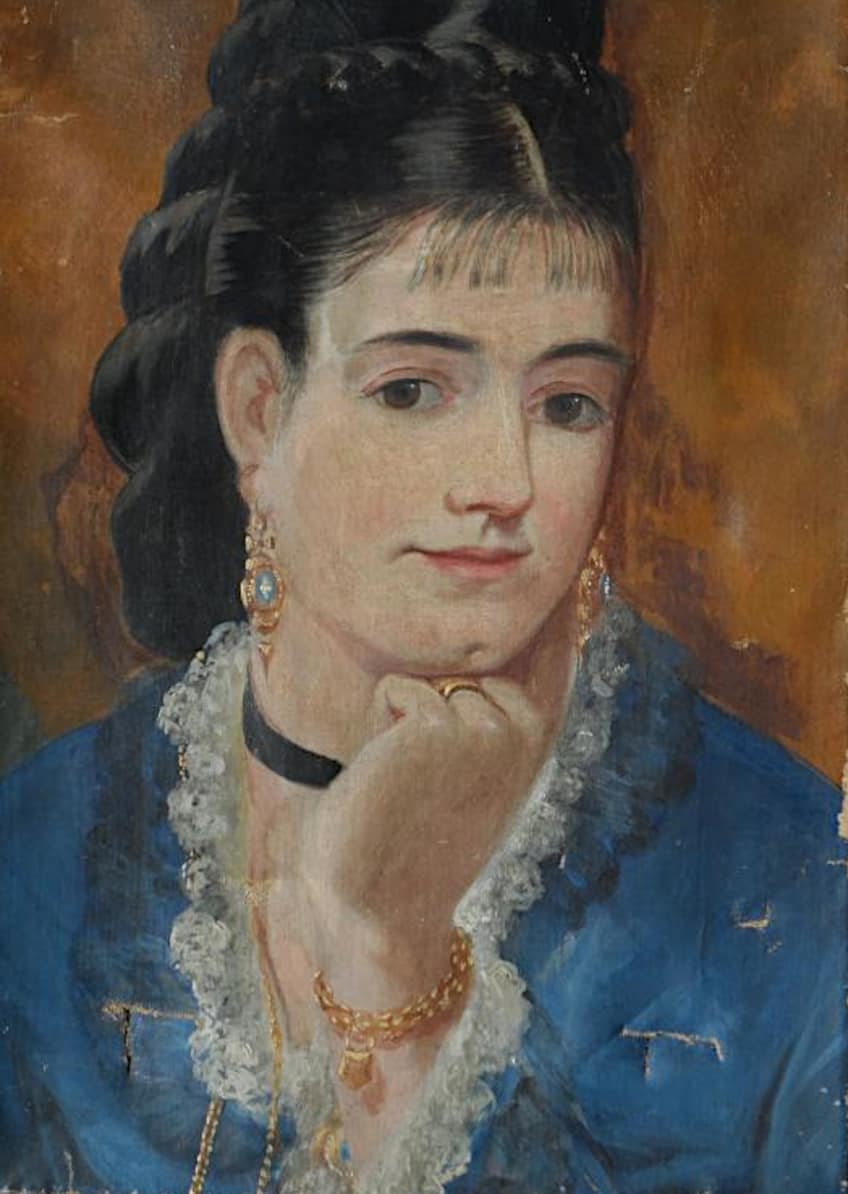
Eva Gonzalès was born in Paris into a family of creatives. Her father was a novelist, and her mother a musician, and they encouraged their daughters (Eva and Jeanne) to pursue painting. Like all women in 19th-century France, Gonzales was not allowed to attend a formal arts education at institutions like the École des Beaux-Arts.
However, like Cassatt, Gonzalès’ family was affluent and could afford private lessons for their talented daughter.
During her teenage years, Eva Gonzalès studied painting under Charles Joshua Chaplin, who was also one of Mary Cassatt’s first mentors. In 1869, Gonzalès started receiving mentorship from Édouard Manet. Gonzalès, in fact, was Manet’s only formal student, and at times, also his model.
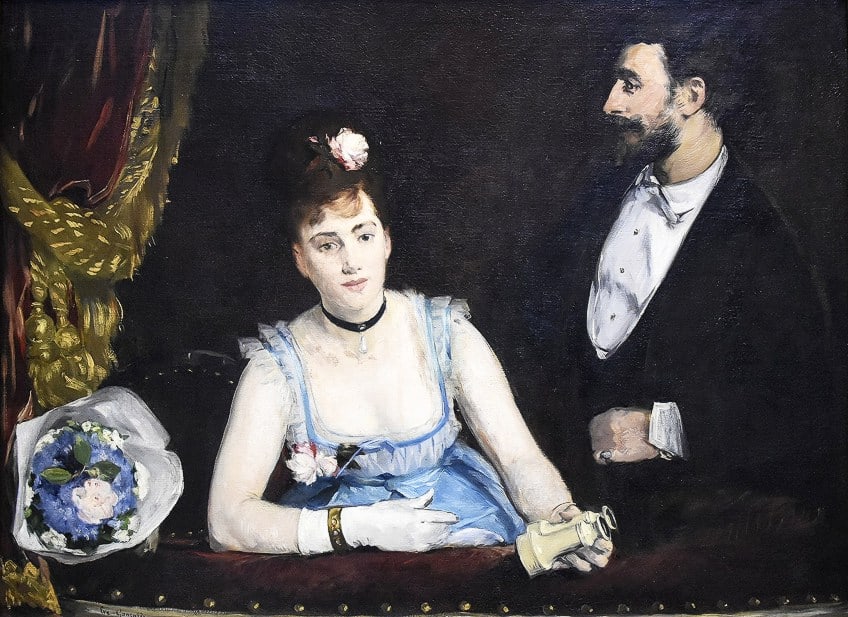
Manet had a prominent influence on Gonzalès’ work. His flat perspective can be seen in some of her work, including A Box at the Theatre des Italiens (1874). Although Gonzalès never exhibited with the Impressionists, she did exhibit in the traditional, and very prestigious, Paris salon in 1879.
Her work, with its loose brushstrokes and soft palette is, however, completely in line with her Impressionist peers.
She was also friends with many of the Impressionist painters, including Berthe Morisot and Paul Cézanne. Gonzalès tragically passed away at the young age of 34 soon after giving birth to her son.
Cecilia Beaux (1855 – 1942)
| Nationality | American |
| Date of Birth | 1 May 1855 |
| Date of Death | 17 September 1942 |
| Where She Lived | Philadelphia, Paris |
| Associated Art Movements | Impressionism, Post-Impressionism |
| Most Famous Paintings |
|

Cecilia Beaux was born in Philadelphia. Her father was a French silk merchant, and her mother was a teacher. Her mother, however, passed away at the young age of 33, 12 days after giving birth. Her father, unable to bear the grief, returned to France. As a result of this, Cecilia Beaux and her sister, Etta Beaux, were raised by their paternal grandparents.
Cecilia Beaux had a natural aptitude for drawing, a skill apparently inherited from her father. Her grandparents recognized this and arranged art lessons for her when she was a teenager.
She continued to study and work in different art-related fields in Philadelphia and reached tremendous success, especially with her portraiture. Her father’s French nationality aided Beaux in traveling at the age of 32 to Paris to study further.

The Impressionist artists working in Paris had an influence on Beaux’s more classical style of painting. She attempted painting en plein air and her brushwork became looser. She also started to dramatically crop her paintings, something that Impressionists often did. Her work, even though mostly inspired by the classical art of Rembrandt and Titian, started embracing a soft focus and experimenting with the play of light.
Beaux became one of the most prominent portrait painters of her generation. Her portraits had a mix of detailed figures and boldly colored backgrounds, similar to the work of John Singer Sargent. Beaux later returned to Philadelphia, where she became the first female teacher at the Pennsylvania Academy of the Fine Arts. Eleanor Roosevelt admired Beaux’s work and even said that she was “the American woman who had made the greatest contribution to the culture of the world”.
Louise Catherine Breslau (1856 – 1927)
| Nationality | German |
| Date of Birth | 6 December 1856 |
| Date of Death | 12 May 1927 |
| Where She Lived | Paris, France |
| Associated Art Movements | Impressionism |
| Most Famous Paintings |
|
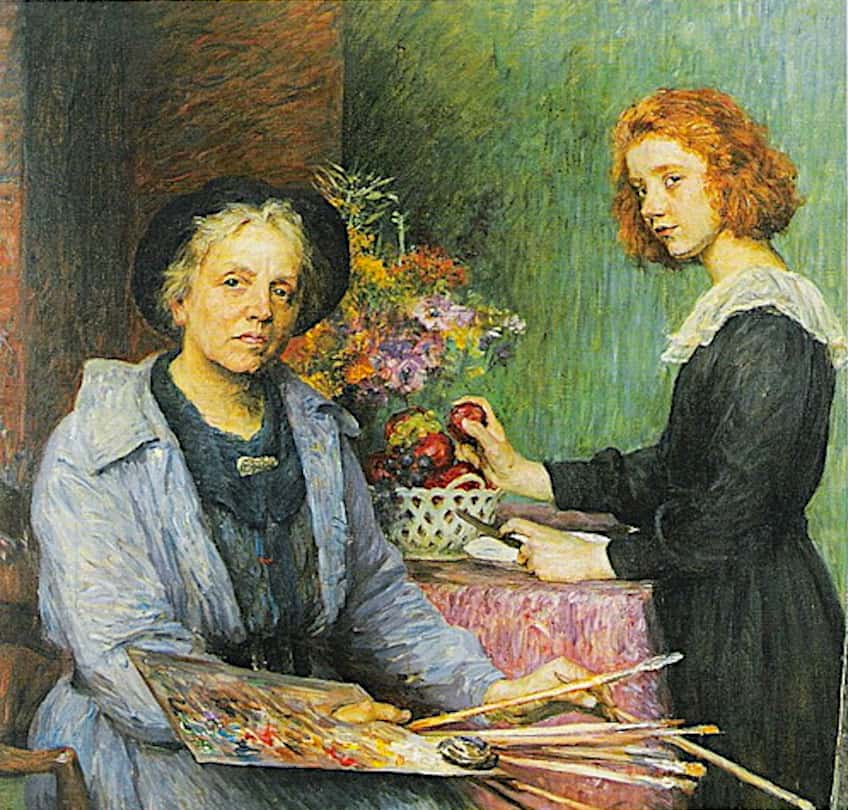
German-Swiss artist Louise Catherine Breslau is a Swiss artist who began painting as a young girl. Her father passed away when she was seven years old, and because she was a sickly child, she was sent to live in a convent.
During her childhood, Breslau suffered from chronic asthma and was bedridden for extended periods. Painting offered her a way to alleviate her boredom.
She fell in love with the art of painting and once she was able to, she moved to Paris to study art under the mentorship of Rodolphe Julian. Breslau quickly gained success, exhibiting on several occasions, mostly with portraits, at the traditional Paris Salon.

Although she didn’t exhibit with the Impressionist, her work had undeniable Impressionist qualities, including her habit to paint outside, her quick brushstrokes, and her color palette. She successfully opened her own studio and supported herself with portrait commissions.
Impressionism was one of the first art movements that had female artists among the founding members. Initially, Impressionist artworks were critiqued as being “feminine” by art critics. What was meant to be an insult to the movement later became its strength. Female Impressionist painters contributed considerably to the famous movement that is today known as one of the first important avant-garde movements of Modernity.
Take a look at our women Impressionist webstory here!
Frequently Asked Questions
What Are the Characteristics of Impressionism?
Impressionism is normally characterized by bright paintings created with quick and loose brushstrokes. Impressionist landscape paintings are normally painted outside, en plein air, and are created with relative colors that are not mixed. Genre scenes are not carefully staged and orchestrated, but painted with immediacy as observed from life Another characteristic of Impressionist paintings is that the image is normally clearer from afar, and more abstract up close.
Is Impressionism Still Relevant Today?
Although we have passed the artistic era of Impressionism, the movement and its ideals continue to inspire artists today. Impressionism offered a new perspective on capturing light, experimenting with color patterns, and capturing fleeting moments of everyday life. These are all aspects that many contemporary artists still use in their practices today.
Jordan Anthony is a Cape Town-based film photographer, curator, and arts writer. She holds a Bachelor of Art in Fine Arts from the University of the Witwatersrand, Johannesburg, where she explored themes like healing, identity, dreams, and intuitive creation in her Contemporary art practice. Jordan has collaborated with various local art institutions, including the KZNSA Gallery in Durban, the Turbine Art Fair, and the Wits Art Museum. Her photography focuses on abstract color manipulations, portraiture, candid shots, and urban landscapes. She’s intrigued by philosophy, memory, and esotericism, drawing inspiration from Surrealism, Fluxus, and ancient civilizations, as well as childhood influences and found objects. Jordan is working for artfilemagazine since 2022 and writes blog posts about art history and photography.
Learn more about Jordan Anthony and about us.
Cite this Article
Jordan, Anthony, “Famous Woman Impressionists – Early Female Modernists.” artfilemagazine – Your Online Art Source. February 2, 2023. URL: https://artfilemagazine.com/famous-woman-impressionists/
Anthony, J. (2023, 2 February). Famous Woman Impressionists – Early Female Modernists. artfilemagazine – Your Online Art Source. https://artfilemagazine.com/famous-woman-impressionists/
Anthony, Jordan. “Famous Woman Impressionists – Early Female Modernists.” artfilemagazine – Your Online Art Source, February 2, 2023. https://artfilemagazine.com/famous-woman-impressionists/.


